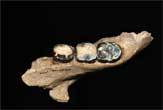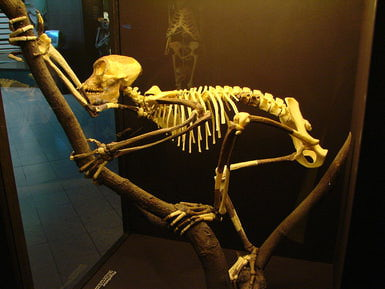|
Numerous fossils of Apes that existed before the advent of Homininds
The Oldest Chimpanzee Fossils
As of 2015, the oldest chimpanzee fossils ever found were unearthed in the Kapthurin Formation, a section of the Rift Valley near
Chimpanzee fossils are very rare because they tend to live in Nakalipithecus NakayamaiNakalipithecus Nakayamai is an ape that existed 9.9 to 9.8 million
Nakalopthecus Nakayamai jawbone. Nakalipithecus is very close to the last common ancestor of Humans,
|
Back to Kenya History Page |



